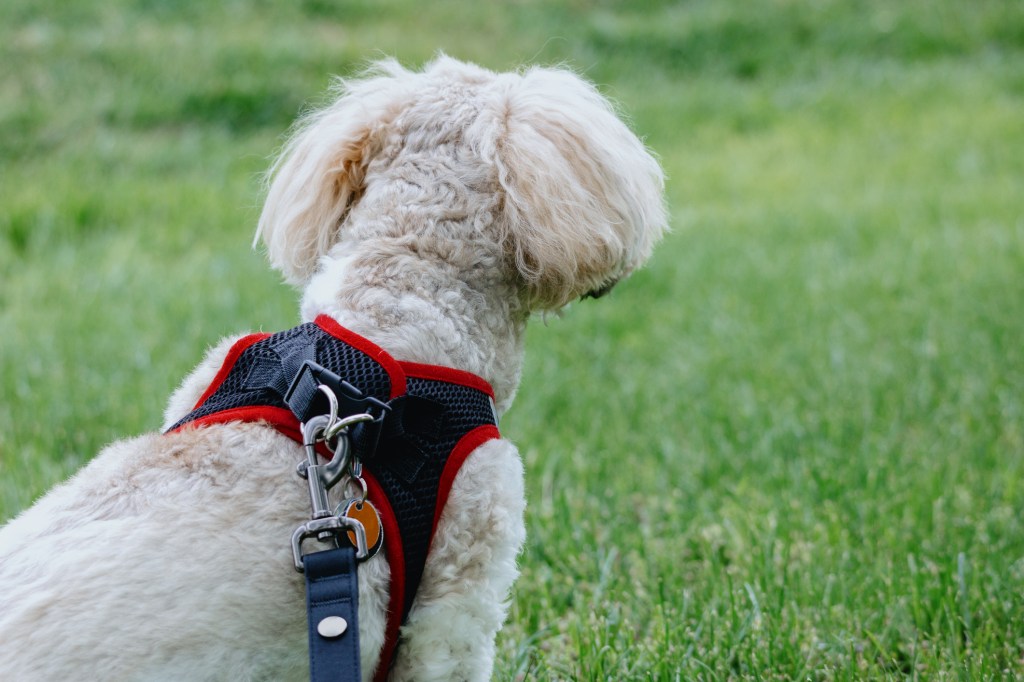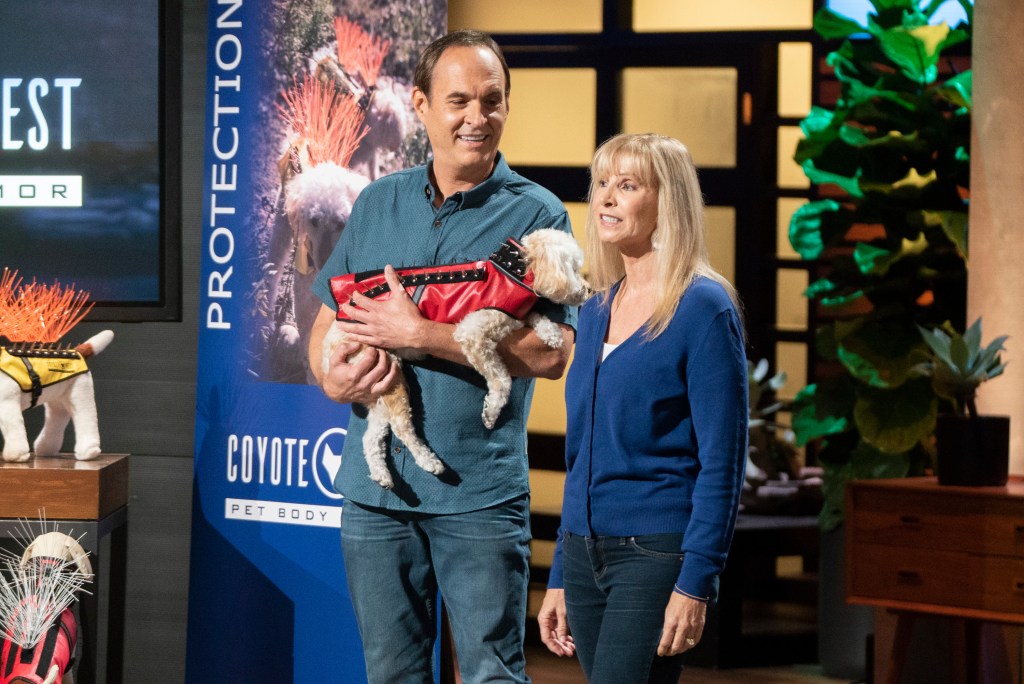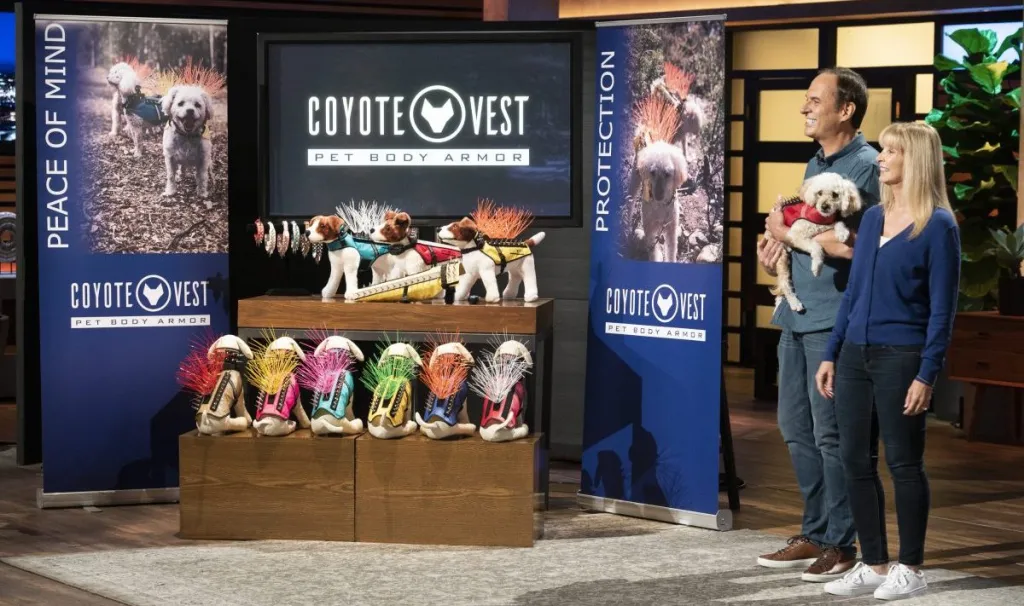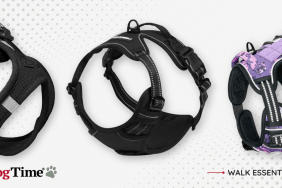Coyote vests for dogs have become increasingly popular in recent years since no dog parent wants to see their beloved canine companion attacked by a wild animal. Sadly, that’s just what happened to San Diego couple and CoyoteVest founders Paul and Pamela Mott.
In a 2023 interview with NBC 7, Paul recalled the tragic incident from years before, which led to the creation of his now flourishing business. Paul shared, “We were at the dog park, we were just getting ready to leave, I heard a yelp behind me.” He continued, “I turned around and there’s my small dog in the mouth of a coyote being carried away. I’ve never seen her since. Disappeared. Gone.” He lamented, “It was the worst day of my life.”
That tragedy led the heartbroken couple to develop a product in 2015 that might spare other pet parents their pain — CoyoteVest. Of the dog protection product, Paul said, “It went from being like — I just want to protect my dogs, to realizing this is kind of a good idea, I think this could help a lot of dogs.”
What is a coyote vest for dogs?

A coyote vest is essentially a type of body armor designed to protect your dog from attacks by coyotes, hawks, and other predators. Typically made from sturdy, puncture-resistant materials like Kevlar, these vests cover the back, sides, and often the underbelly of the dog. Many are equipped with spikes or whisker-like protrusions on the back and sides, intended to deter or at least minimize injury from bites. Some versions also include neck protection in the form of collars or capes that aim to keep your dog safe from bites to the neck — a common target area for coyotes and birds of prey.
How a coyote vest for dogs works
The concept behind a coyote vest is simple yet effective. The Kevlar material used in the vest acts as a barrier between your dog and the teeth or claws of a predator. Additionally, the spikes or quills on the vest serve a dual purpose: they help to keep predators at bay by posing a physical threat and also function as a visual deterrent. Many vests are brightly colored to make your dog more visible, which can further deter attacks. What’s more, coyote vests are easy to put on and take off, ensuring that using them does not become a hassle for you or a discomfort for your dog.
Does pet body armor offer my dog protection from coyotes and hawks?

Yes, to a certain extent. While no pet body armor can guarantee 100% safety, a coyote vest significantly increases your dog’s chances of surviving an encounter with a predator unharmed. The materials used are especially durable and resistant to punctures and tears. Moreover, the psychological deterrent is quite effective; the presence of a coyote vest compromises both the element of surprise and the ease of an attack, factors many predators rely on. It is important, however, to maintain realistic expectations and understand that a coyote vest is an added layer of protection, not an impenetrable shield.
Downsides of a dog coyote vest
Coyote vests can offer substantial protection for your dog. However, there are some potential drawbacks to consider.
- Restricted movement: Some dogs may find wearing a coyote vest to be restrictive or uncomfortable at first. It’s essential to choose a well-fitted vest and to give your dog time to adjust to wearing it, especially during activities.
- Overheating: In hot climates, wearing a vest could increase the risk of overheating. Opting for vests made from breathable materials and ensuring your dog stays hydrated and cool when wearing one is crucial.
- Potential for accidents: The additional weight and bulkiness of the coyote vest could increase the risk of accidents — such as tripping on objects — especially in outdoor environments with uneven terrain or dense vegetation.
- Social interaction challenges: Other dogs may react differently to a dog wearing a coyote vest. This could lead to altered social interactions or even aggression from other animals, as the vest can change your dog’s appearance and body language.
- Limited effectiveness: Coyote vests aren’t foolproof and may not offer complete protection against serious attacks. It’s important to remain vigilant and to take additional precautions, especially in areas known for predator activity.
What is the difference between a coyote vest and a spike vest?
The terms “coyote vest” and “spike vest” are often used interchangeably, but there can be slight differences. While they share the fundamental characteristic of being made from stab-resistant material, the method of securing these vests onto a dog differs significantly between the two types. Specifically, the coyote vest — or CoyoteVest — has a robust 3-prong sturdy buckle attachment complemented by a long nylon web strap. This design feature not only ensures a secure fit but also provides an extensive range of adjustability. In particular, this is beneficial if you want a tailored fit that you can fine-tune to your dog’s size and body shape, ensuring maximum comfort and protection.
On the other hand, a spike vest utilizes a Velcro band that snugly wraps around your pet’s throat and stomach. Moreover, it is capable of adjusting within a range of approximately six to eight inches, based on its size. Dogs with specific medical conditions, such as those diagnosed with tracheal issues, notably benefit from wearing this type of vest. The Velcro design offers a gentler alternative that minimizes pressure on sensitive areas while still providing substantial protective coverage.
How else can I keep my dog safe from coyotes?

Protecting your dog from predators involves a multifaceted approach. In addition to considering a coyote vest, here are a few more tips:
- Secure your yard: If you live in a high-risk area, consider installing a coyote-proof fence or using motion-activated lights to deter wildlife from entering your property.
- Train your dog: Teach your dog basic commands like recall and leash walking to avoid risky situations.
- Avoid dawn and dusk: Coyotes are most active during the early morning and evening hours, so try to schedule your walks outside these times.
- Keep your dog on a leash: Use a comfortable harness and leash for walks to maintain control and prevent your dog from running off.
- Make noise: Carry a whistle, bell, or an air horn to scare away potential predators.
- Stay vigilant: Always be aware of your surroundings and avoid areas where coyotes commonly roam.
Ultimately, the decision to use a coyote vest for your dog is a personal one. Weigh the potential benefits and drawbacks carefully before making a purchase, be it of a CoyoteVest or spike model. Furthermore, consulting with a qualified animal behaviorist or veterinarian can help you make an informed decision tailored to your dog’s needs and your environment. Remember, though, a coyote vest is just one part of keeping your pet safe. Supervision, training, and awareness are equally important in ensuring your dog enjoys a long, happy, and healthy life by your side.









